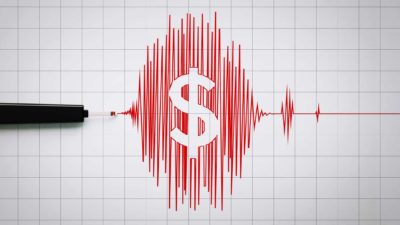We've just gotten the latest employment data for the Australian economy, and the results for the month of July make for some sobering reading. Just don't ask the share market or ASX 200 investors.
According to the Australian Bureau of Statistics (ABS), the unemployment rate in Australia increased by 0.2% in July, rising to a seasonally-adjusted 3.7%. That means that the number of people looking for work rose by 36,000 last month.
The labour force participation rate fell over the month, dropping 0.1% to 66.7%.
However, it wasn't all bad news, with monthly hours worked for July increasing by 0.2%.
Here's some of what the ABS' head of labour statistics, Bjorn Jarvis, had to say about these figures:
The fall in employment follows an average monthly increase of around 42,000 people during the first half of this year. Employment is still around 387,000 people higher than last July.
July includes the school holidays, and we continue to see some changes around when people take their leave and start or leave a job. It's important to consider this when looking at month-to-month changes, compared with the usual seasonal pattern. The only other fall in employment in 2023 was in April, which also included school holidays…
Despite these falls, both indicators were still well above pre-pandemic levels and close to their historical highs in May.
One would think that a rise in unemployment was bad economic news, and the stock market might respond negatively. But that is certainly not the case today. To be fair, the S&P/ASX 200 Index (ASX: XJO) was already having a pretty dicey day, down more than 1.2% at one point this morning.
But ever since the latest employment data was released at 11.30 am, the ASX 200 has conspicuously pared back its losses. At the time of writing, the index is nursing a 0.96% loss, and is sitting at around 7,125 points at present. See for yourself below:
Why are ASX 200 investors celebrating a rise in unemployment?
It might seem strange that investors are reacting positively to a lift in unemployment. But there is a perfectly rational explanation.
Unemployment rising off of the historically low rate of 3.5% arguably shows that the Reserve Bank of Australia's plethora of interest rate hikes over the past 15 months or so are working as intended. As such, there is now less pressure on the RBA to lift rates going forward.
Interest rates have a direct impact on the stock market, as higher rates encourage more people to put their cash in term deposits, savings accounts and government bonds instead of shares. Higher rates also make it more expensive for companies to borrow money, thus reducing their potential profitability.
This week, the RBA released its minutes from its August meeting, in which it decided to leave the cash rate unchanged at 4.1%. Here's some of what these minutes said:
Members noted that the full effects of the earlier tightening were yet to be recorded in the data. Even so, consumption had already slowed significantly, there were early signs that the labour market might be at a turning point and inflation was heading in the right direction.
Considering this and the forecasts, members observed that there was a credible path back to the inflation target with the cash rate staying at its present level.
Obviously, today's unemployment metrics reinforce what the RBA called "early signs that the labour market might be at a turning point". As such, they fit in nicely with what the RBA says it wants to see "with the cash rate staying at its present level", implying that further rate hikes might not be necessary.
This is likely why ASX investors are reacting positively to this latest unemployment news today.









